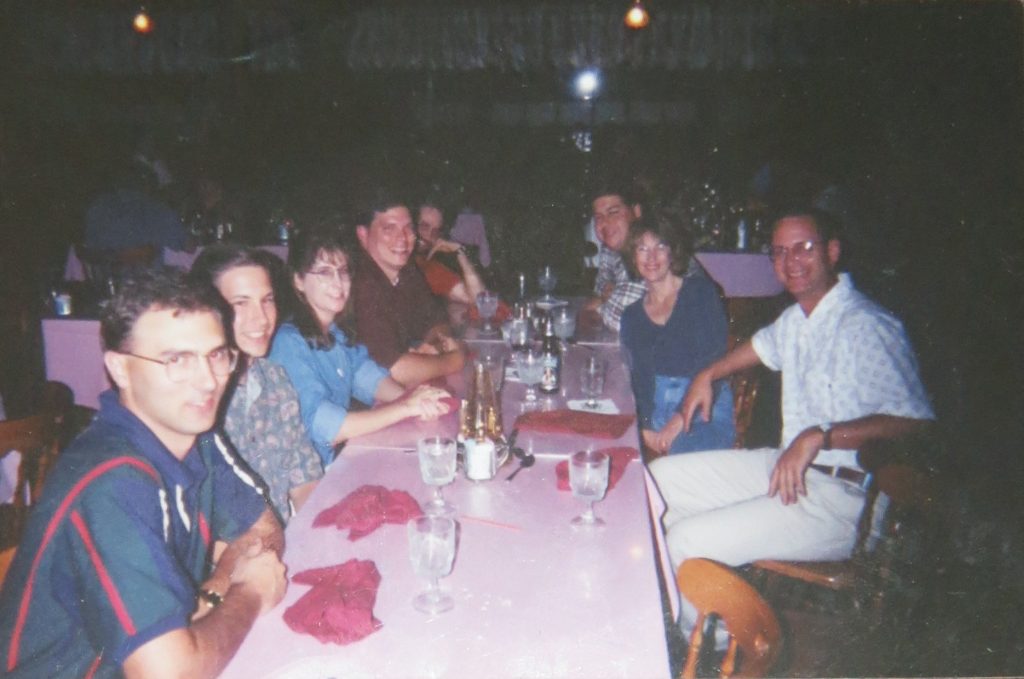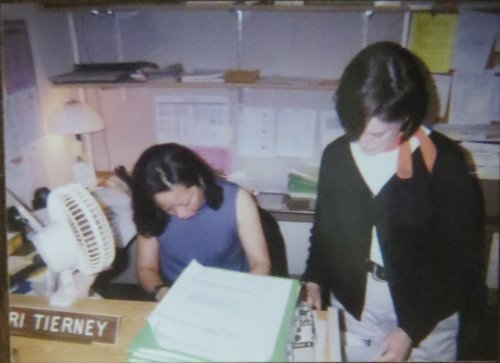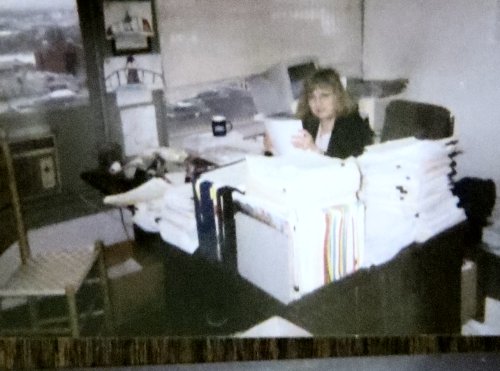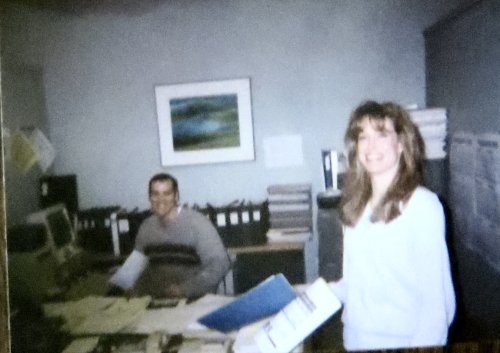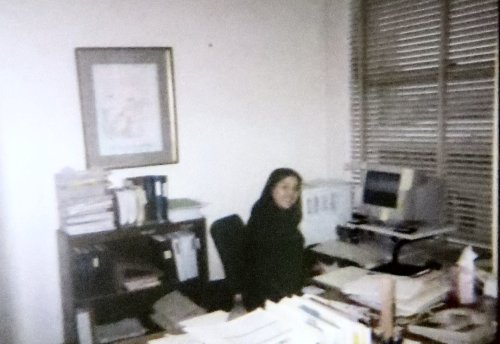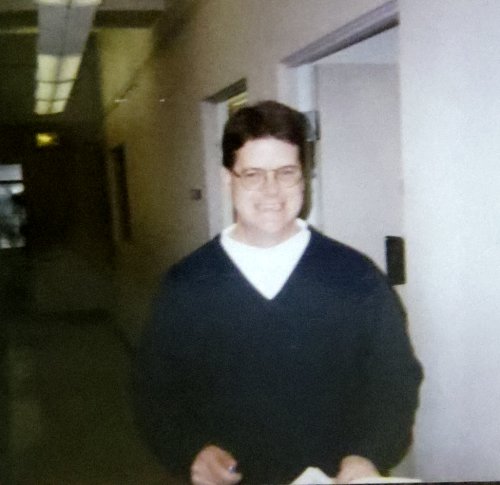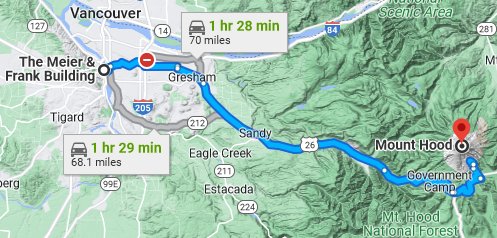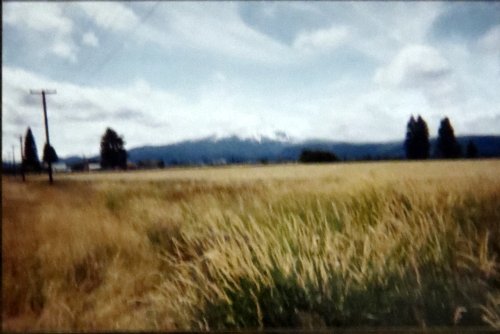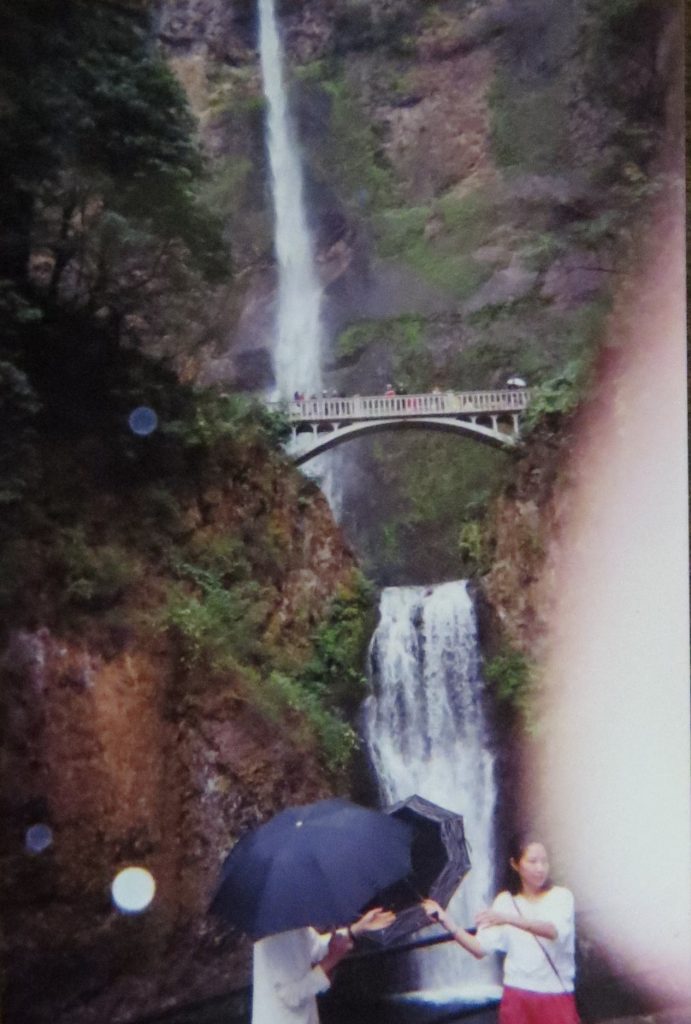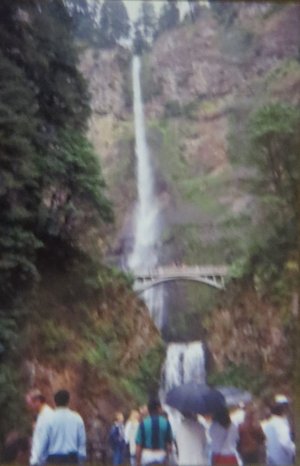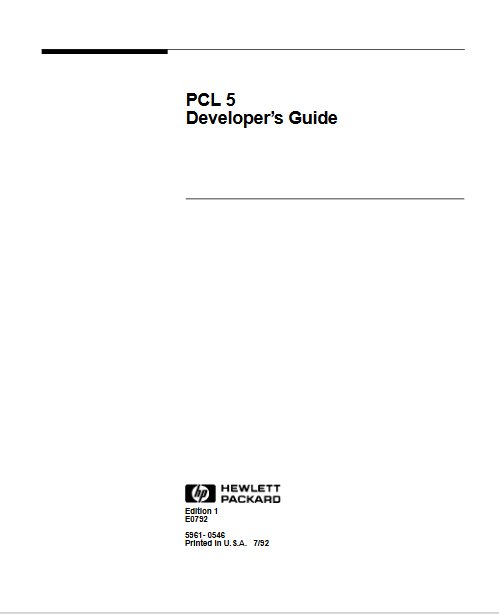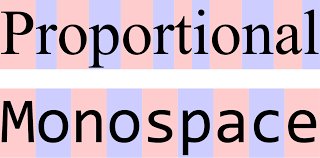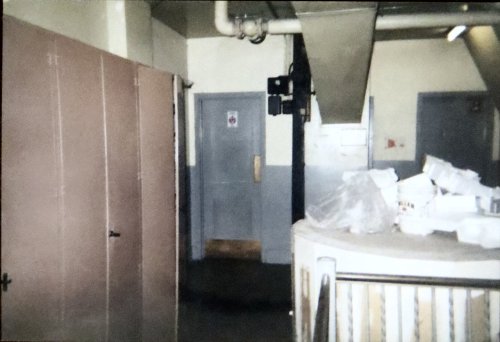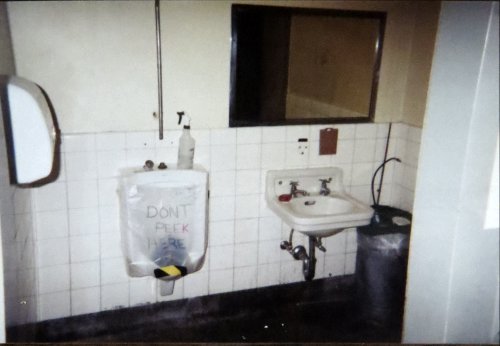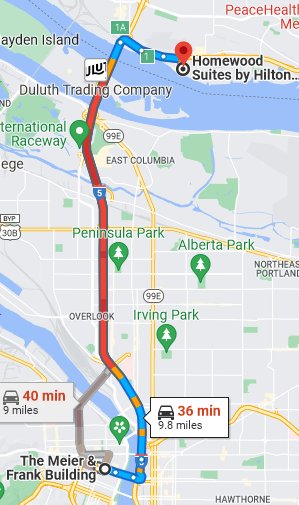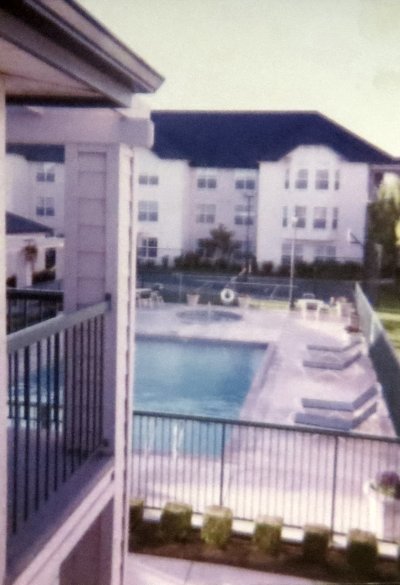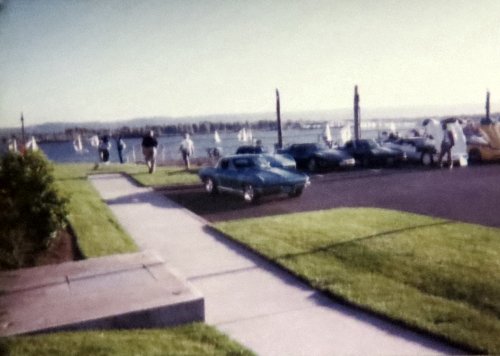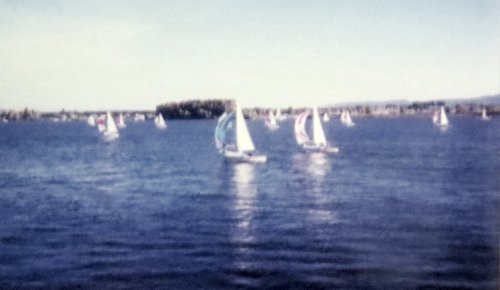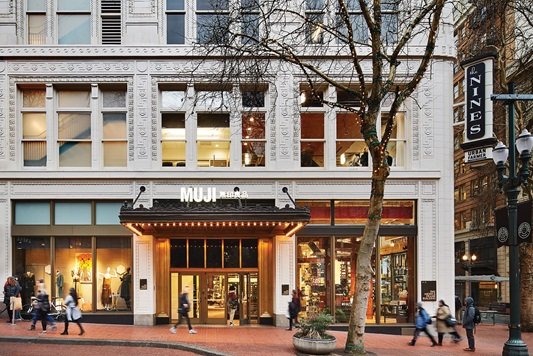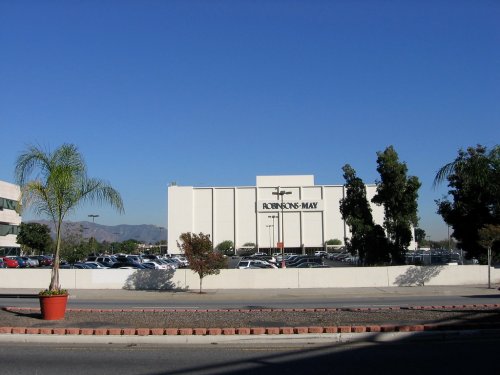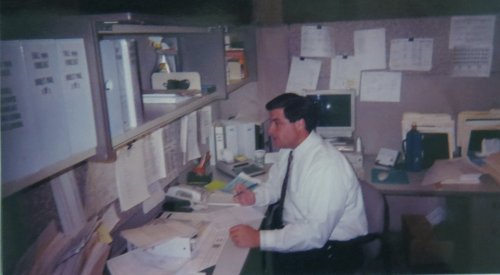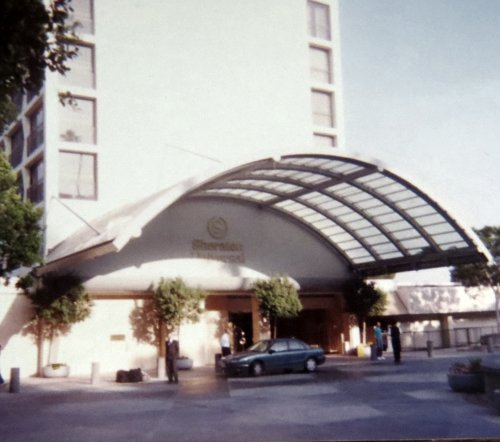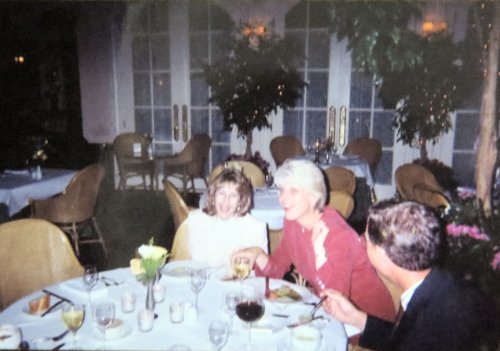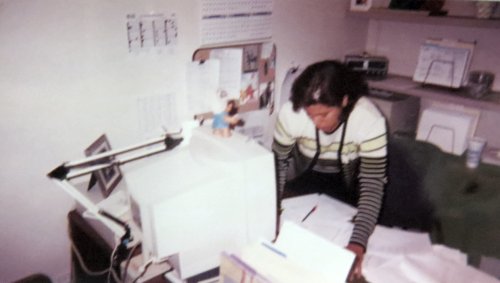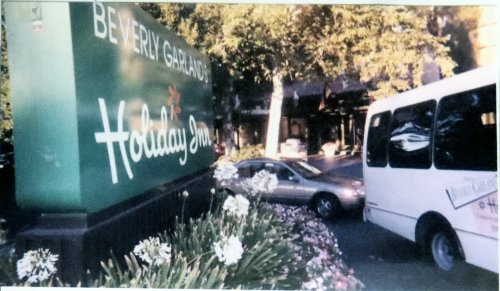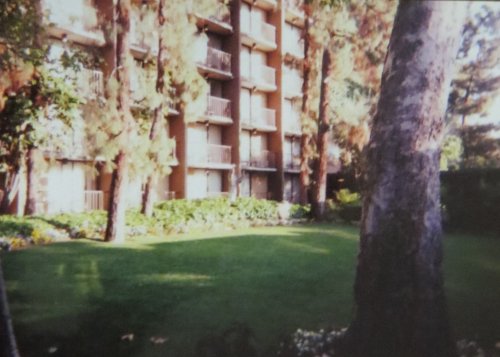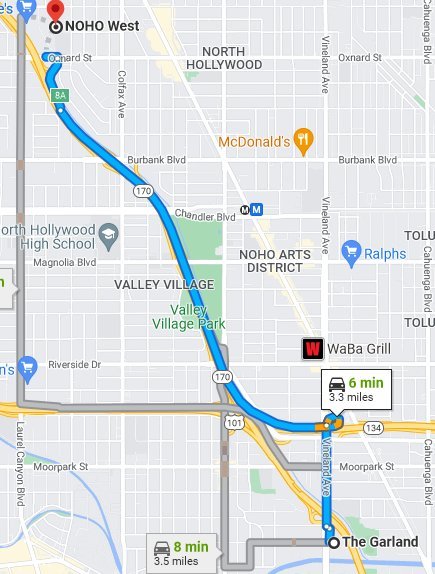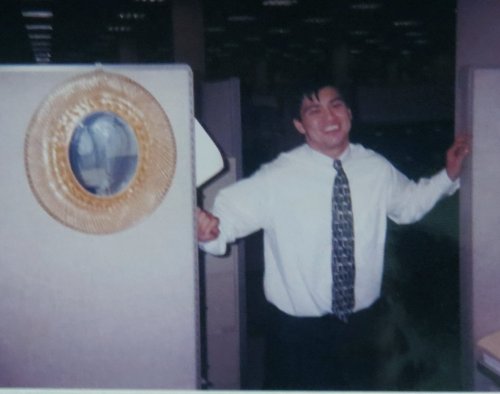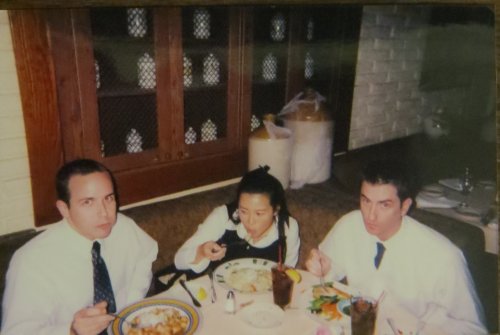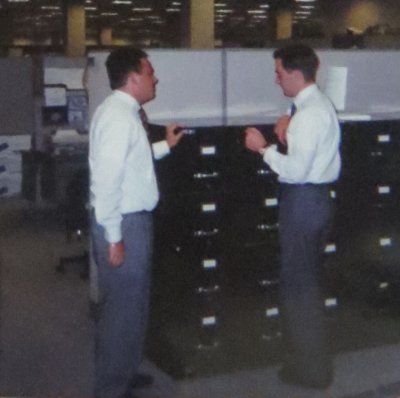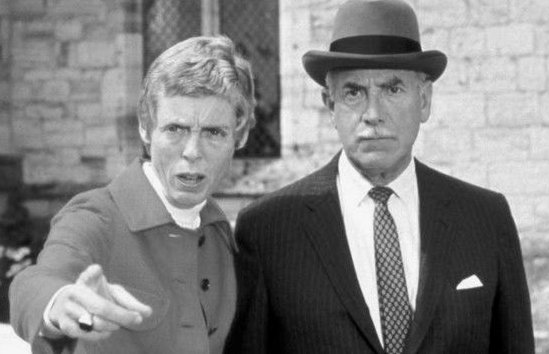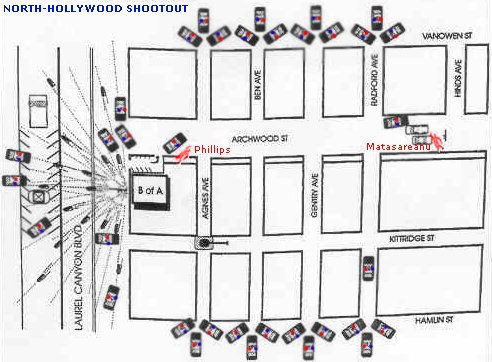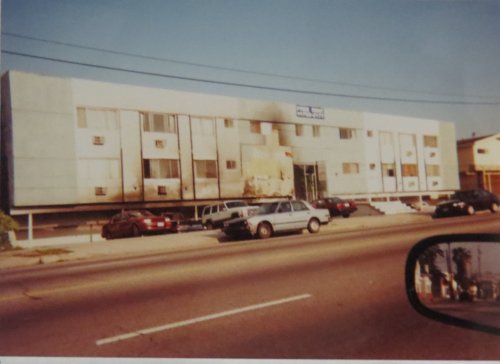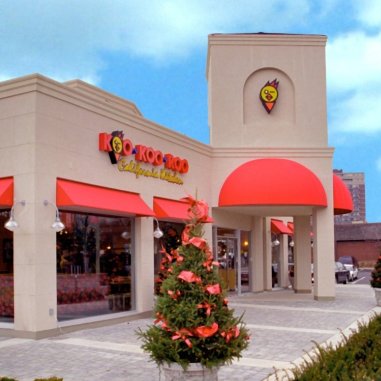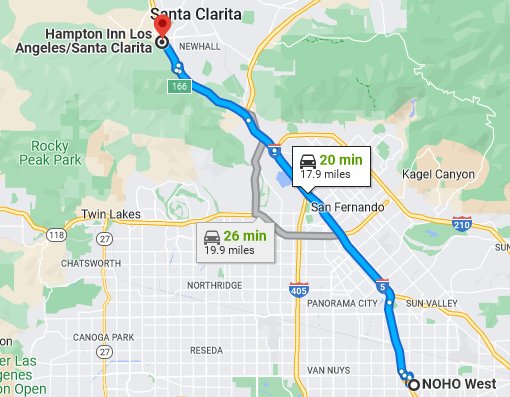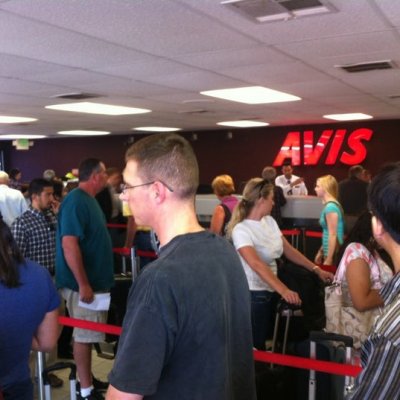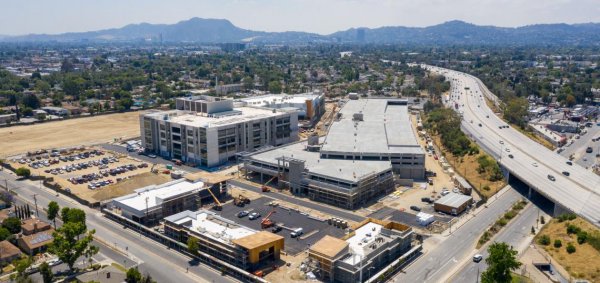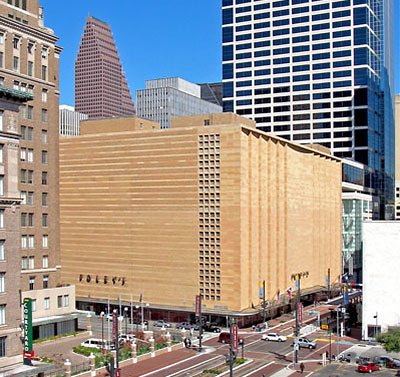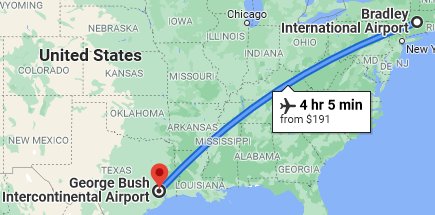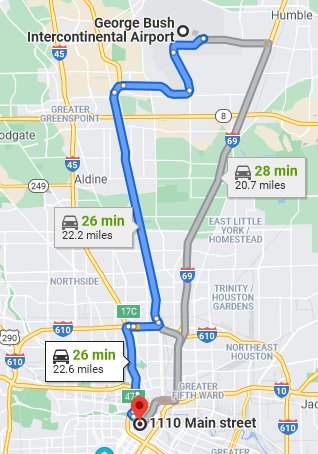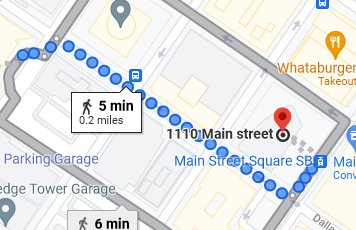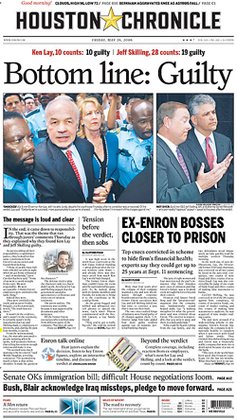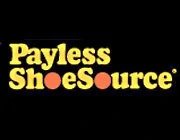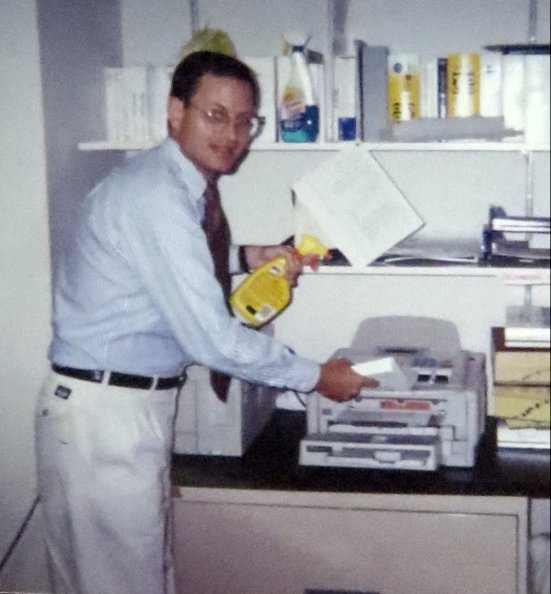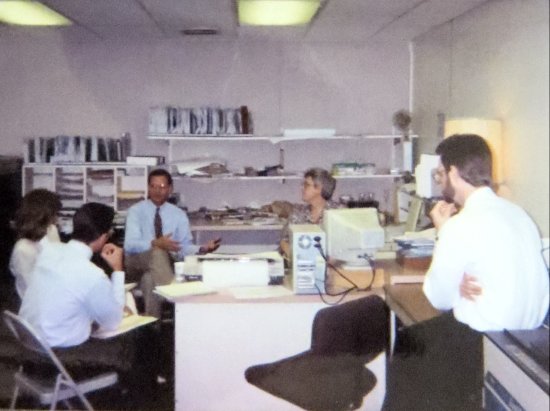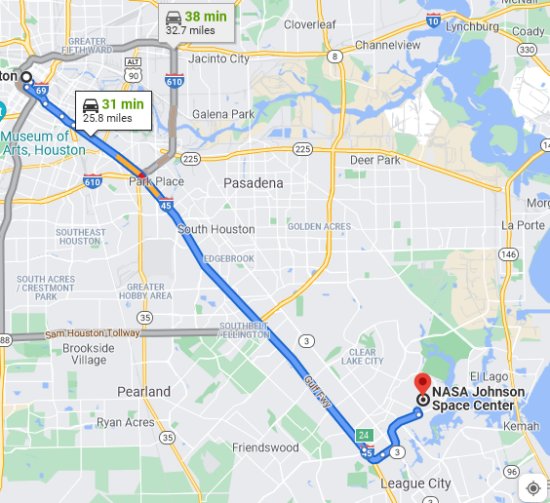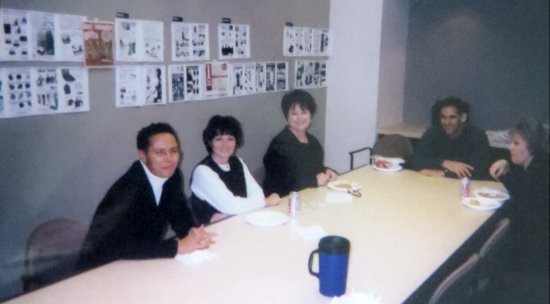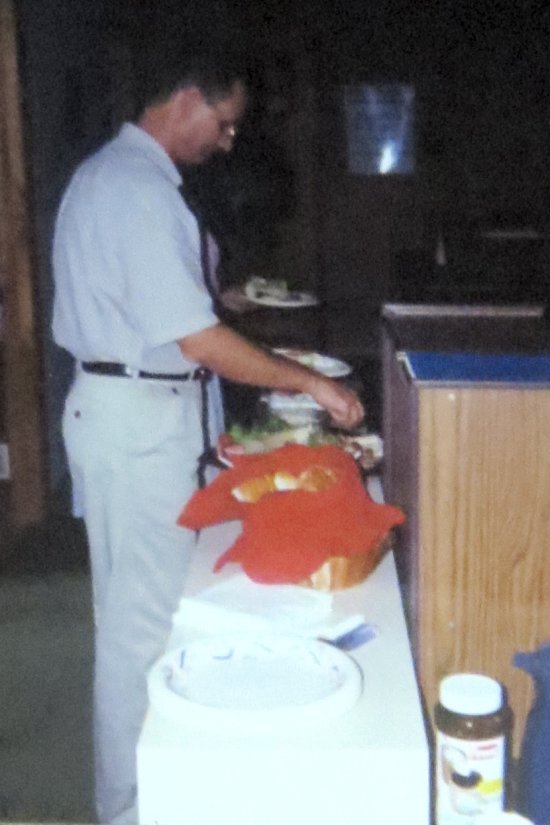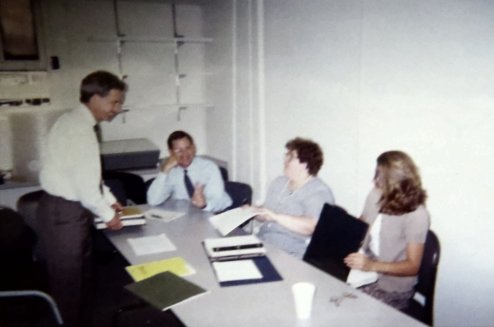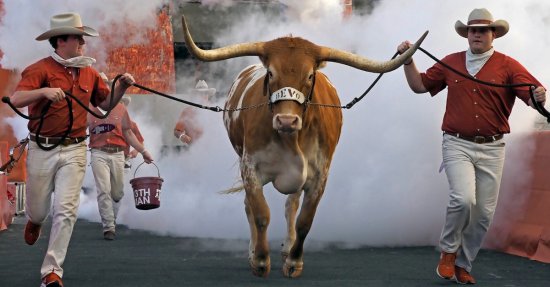Department store division of the May Co. with headquarters in Portland, OR. Continue reading
Meier & Frank was a chain of departments stores owned by the May Company. Its headquarters was in Portland, OR. TSI never pitched the AdDept system to the store’s advertising department. In 1998 the May Company decided to order AdDept systems for the three department store divisions that were not already using it—Robinsons-May, Meier & Frank, and Filene’s.
M&F was by far the smallest of the May Company’s department store divisions. At the time of the installation it had only seven stores, which made it barely a quarter the size of the next smallest division.
These installations were quite different from the other systems that TSI had installed at May Co. divisions. They began with three days of rather intense sessions in TSI’s office in Enfield. We were teaching them about the system design of AdDept, and they were informing us about their policies and expectations for the system.
The previous May Co. installations began with a site visit in which I had learned about each department’s business procedures and priorities. TSI then presented a formal proposal for the base system and any custom code that I thought was needed. Only after the system had been delivered and installed did we provide training, and it took place at the company’s location.
At some point in 1996 a group of people from M&F visited TSI’s office for orientation and training. Those sessions were also attended by people who would be involved with the installation at Rob-May. Robert Myers, with whom we worked in the AdDept installation in the advertising department of the Foley’s division (described here), also was there to provide the perspective of a user of the system.
I found several photos that I took on the occasion of their visit as well as photos that I took in Portland. Since I was still using disposable cameras in those days, the quality of the prints is not great. I was lucky to have this much. On one trip I left a camera that was full of photos in my rental car. I called Avis on my next visit and learned that they had found the camera. They later mailed it to me.
The people: The photo at the left was taken after one of the training days in Enfield. On the last evening we all went to the Mill on the River restaurant, but I think that this photo might have been taken at a different place.
Robert Myers was seated next to me. In the photo he is on the far right. Three representatives of M&F are on the left. I am pretty sure that the guy with glasses was Brent Stapleton1, who managed the departmental network and was our liaison for the first part of the project. I do not remember the name of the fellow on his left, but I am pretty sure that his hobby was making root beer at home. He might have been Steve Mulligan, the Co-op Coordinator who moved to Ireland the following summer. I don’t remember the woman’s name or function, and I don’t recognize the next fellow. He might have been from Robinsons-May. None of these people appear in any of the photos that I took on my trips to Portland.
The last person on the left side of the table was definitely Doug Pease, TSI’s Marketing Director, who sat in on some of the training sessions. The other two people were from Rob-May and are described here.
The system was not actually installed at M&F until March of 2000. I think that they postponed it because Kaufmann’s and Rob-May were higher priorities.
The next five photos were taken at the department’s office on the thirteenth floor of the flagship store in Portland. The building had fifteen floors.
In the photo on the right, the seated woman was Dori Tierney2, who was responsible for scheduling M&F’s ads in the newspapers. She also produced the weekly calendar that was the primary document that was used by many people inside the department and out. The other woman was her boss, Sheila Wilson3, the Newspaper Manager. She formerly had worked at Hecht’s.
In the first year of the installation I worked with Dori more than anyone else because producing that calendar was the department’s first objective for the AdDept system.
I am almost certain that the woman surrounded by papers in the photo on the left was Kathy Reed, the Business Office Manager. One of her primary responsibilities was to produce at the end of the month the report of expenses and co-op income by CCN in the May Company’s required format, the so-called 790. AdDept produced this at all of the other divisions. We never succeeded at completely automating that process at M&F for reasons that are explained in the section about AdDept projects below.
I have no recollection of the people in the photo at right. Maybe I took this shot because they were both so photogenic.
Many of the people in the advertising department at M&F did their work on clunky old IBM PC’s. They complained that all of their machines were hand-me-downs from their counterparts at Robinsons-May in California.
I took the two photos shown above at the M&F office in Portland, OR. I do not remember the name or function of the woman on the left. The guy on the right was Bryan Kipp, the Planning Manager.
From searches on LinkedIn I discovered that the Broadcast Manager at the time was Shauna Thompson, and the Direct Mail Manager was Linda Farrington. I probably worked with both of them.
The first visit: A month or so after the training session in Enfield Doug Pease and I flew out to Portland so that I could install the TSI software on the AS/400 that IBM had delivered. We also met with several executives to make sure that we understood and could address the department’s priorities.
I was surprised to see that the entirety of eastern Oregon was essentially desolate, and the coast was so rugged as to be almost uninhabitable. The majority of Oregonians were concentrated in the cities along the Willamette River.
In those days it was much cheaper to fly on Saturday than on Sunday, and Doug and I did that on the first trip. I found among my M&F photos several of Mt. Hood and Multnomah Falls. On Sunday we took our rental car on a spin around the very scenic areas east of Portland. Kate Behart and I had also visited these sites on a sales trip to Fred Meyer4, another retailer based in Portland, a few years earlier.
The Senior Vice-president of Marketing at M&F was Emily White5, whom Doug knew from when they both worked in the advertising department of the G. Fox department store chain in Hartford. She knew about TSI’s capabilities from her time at Macy’s West. The Advertising Director was Laura Rutenis6. I think that she had previously worked at Hecht’s.
On the first visit Doug and I spent quite a bit of time talking with Emily and Laura. They explained their difficulty as the smallest of the May Co. divisions. They had far fewer employees than the other divisions, but their stores had just as many selling departments, and they ran just as many ads (in fewer newspapers, of course), and they were expected to produce the same reports as all the other divisions.
The primary objective of the AdDept system would be to get the module for newspaper ads up and running as quickly as possible and to produce their weekly calendar in the format that they currently used. At the same time the quantitative and qualitative information for ads for all of the other media needed to be entered into the system so that all the expenses could be entered in AdDept (or imported from PC systems) and uploaded to the corporate accounting system. So, the remainder of the time on the first visit was spent familiarizing the employees with the programs for entering the data and showing them how to check their work.
The projects: I don’t remember much about most projects that we did for M&F. I am sure that the May Company wanted them to produce the 790 report using the AdDept system’s cost accounting programs. That would require them to enter (or upload from another source) all the expenses from every media. I am pretty sure that we reached the point at which all of the necessary data was in the system.
Nevertheless, AdDept never produced the 790 report at M&F because the department’s Business Office Manager had been fudging some of the allocations required by the May Co. The corporation’s internal auditor surely knew about this, but she had no assistants to help her in the Business Office, and it would not have been practical for her to implement all the required steps within the strict time restraints. I thought that it would be feasible for her to do it in AdDept, but I could understand why she did not want to commit to a process that she could never verify produced results that were consistent with her existing methods. Also, she was more confident that she could meet the deadline every month without using AdDept.
I definitely remember spending many hours working on the weekly advertising calendar, which was designed to be printed on a special Hewlett-Packard laser printer that the advertising department had purchased. It could handle very large forms. Printing from the AS/400 was ordinarily limited to text of at most 198 characters per line and a single non-proportional font, Courier New. So, it would not be easy to replicate what they were doing.
Every advertising department that we worked with produced a calendar that was the basis of communication with other departments and the brass. In every other case we had been able to convince them that what the AS/400 could produce in the usual way—with whatever changes they needed—would suffice. The alternative was for us to produce output files that could be downloaded to a PC and formatted for printing in Word, Excel, or other software, and a few chose that method. The people at M&F insisted that that was not good enough. They needed the calendar the way it currently looked and they did not want to take extra steps to provide it.
In order to produce the calendar that they required I decided to make use of research and coding involving PCL, the language that Hewlett-Packard’s printers used. Instead of creating “spooled files” that the AS/400 translated into PCL using its printer drivers, the program that I wrote for M&F created files of instructions that were sent directly to the printer. They bypassed the AS/400’s drivers because the files were already in the language that the printer understood.
This approach had the advantage of allowing the use of proportional fonts such as Ariel or Times Roman. It also allowed the use of simple graphics such as boxes, variable font weights and sizes, italics, bolding, etc. The end result was definitely more attractive, but the big advantage was that the format was already familiar to the executives from other departments to whom it was delivered. It could all fit on one page that included attractive fonts, boxes, and other things that no one ever saw on a computerized report in the nineties.
From TSI’s perspective there were, however, serious disadvantages to this kind of approach. None of the other people at TSI were even slightly familiar with PCL. On this project I wrote all of the code myself.
By 1998 I was generating only a fairly small percentage of the new code at TSI’s office. I spent the bulk of my time traveling to clients, installing new systems, training, writing up proposals for new systems, modules, and requests for custom programming. I also had important administrative obligations, including locating more appropriate offices for TSI.
I suppose that I could have asked Denise Bessette, TSI’s VP of Product Development to learn PCL 5 from the handbook that I had found somewhere, but there was no guarantee that we would ever use this technique again. Besides, time was of the essence, and she already had a lot on her plate. By far the fastest way to deliver the code was for me to do it. There definitely was too little time for me to teach her in a formal setting how it worked.
Also, as will become obvious, the logistics would not have worked if the programming “team” had more than one member. Denise did not want to travel more than necessary.
Another big disadvantage was that it took much longer to write code for the printer than to write reports that could be sent to the printer driver for translation. We had been using the AS/400 long enough that we had that process down pat.
Furthermore, because TSI did not have a printer that could handle the oversized form, there was no way to test the finished product in the office in Enfield. I had to write little programs that produced segments of the calendar, test them on an HP printer that we did have, and then write the code that stitched them together. Also, I could not even look at the output on the screen. I ended up delivering the code to M&F in person and testing it at their site with real data.
I should mention that Denise did not like this kind of cowboy coding at all. She thought that everything should go through the tried-and-true process.
Finally, if M&F had run into problems with the calendar when I was on the road—which I often was during that period—Denise and the programmers might have trouble isolating the cause.
In retrospect it might have made sense for me to decline this project. Someone from the May Company would probably have stepped in to help them find a reasonable substitute. However, I wanted a happy client, and I was quite sure that the people at M&F would not have been happy with anything less than what I did.
I did get the calendar program to work, and I do not remember them reporting problems with it after the first few days. I might have needed to make small changes to handle situations that they forgot to tell me about. That almost always happened.
According to my notes by February 25, 2000, things were going reasonably well:
So far I have not picked up specs for a lot of custom programming. I spent much of yesterday working on the calendar and the insertion orders. I finally got the calendar so that it is exactly the way they wanted it. The first faxed insertion order cut off the top ten lines of the page. I fixed it by rotating 270 degrees instead of 90. I can’t understand why that would make a difference. We also had a query class for the people who have some experience in working with AdDept.
Life in the M&F advertising department: In general the people in the department, like nearly everyone that I met from the May Co., were hard-working and enthusiastic about their jobs. They did feel that they were the parent company’s ugly step-child, and there were many things besides the outdated electronic equipment to bolster that feeling. For example, there were no restrooms on the thirteenth floor that the department occupied. The store’s selling floors certainly had very nice restrooms, and the employees were allowed to use them. However, that involved taking an elevator down from the thirteenth floor and back, which could add several minutes to the project.
The alternative was to climb the stairs up to the fourteenth floor. That floor must have had a purpose at one time, but by 1998 it was just a relatively empty area with plumbing. I found it sort of exciting to go up there. It was like being in someone else’s attic. You never could predict what had been put up there just to be out of the way.
I used the men’s room up there whenever I felt adventurous. It was quicker, and I had very low standards in those days. The picture on the right is surely worth a thousand words. There was only one stall in the men’s room, but it was almost never occupied even though, as you can see, the one urinal was permanently out of order. The sign on it helpfully advised “DON’T PEE HERE.” Someone had added a “K” to the verb.
I seem to recall that there was also a ladies’ room up there, but it did not get used much. At any rate I did not try to persuade anyone of the fair sex to take photos for me.
This was not the only unusual sight at M&F. Here is what I wrote on February 25, 2000:
Meier& Frank is a strange place. They have by far the worst facilities of any department store I have been in. I will try to take some photos today. One guy’s office is so small he can easily touch both walls at the same time. Several people are sitting in a former conference room. There is a pile of discarded computers in one hallway. Many places are dirty. One corner in the main part of the office had huge dust bunnies. It could not have been cleaned in months. Nevertheless, everyone seems in good spirits.
Most of my time in the the first few trips was spent with Dori. She had a small desk in a fairly large office that also held a lot of records and that big printer. Dori had one very peculiar trait, that she did not try to hide. She would verbally accompany her work with a softly spoken play-by-play: “I am walking over to the printer to get the schedule. Now I am getting last week’s schedule out of the file. Now I am taking them to …”
At the time I found it incredible that they would put up with this annoying behavior. In retrospect I think that I was too judgmental. She did her job, and they kept her isolated enough that she did not drive anyone else crazy.
I remember that for one visit they assigned me to work in a very small two-person office. I swear that it was so narrow that I could touch two parallel walls at the same time. I was put there because one of the occupants was on vacation. I found my temporary officemate quite funny. I remember that he had posted on the wall a cartoon of Beavis and Butthead talking about the newly elected team of Bush and Cheney. The balloons read “He said ‘Bush’, heh heh,” and “He said ‘Dick’, hee hee.”
In those days I drank a lot of Diet Coke and Diet Pepsi. I couldn’t tell the difference, but I could definitely tell if someone served me an off-brand. I happened to mention that I once tried to mix them. The guy with the cartoon solemnly warned me that that might not be legal.
I had completely forgotten about the following until I read it in my notes from February 23, 2000:
Brent got a call from someone from the May Company. Evidently they are considering getting new AS/400’s for both Meier & Frank and Filene’s because Dave Ostendorf told them that IBM is withdrawing support for the CISC systems.
Robinsons-May and Filene’s definitely got much faster systems, but I don’t think that M&F ever got an upgrade.
Life in and around Portland: I think that on our first visit Doug and I stayed in a Holiday Inn on the other side of the Willamette River. On later visits I think that I must have stayed somewhere closer to downtown. I ran nearly every day in those years, and I have a vivid recollection of running both through the streets of downtown Portland and in a large park along the Willamette River. I considered it very cool that the city allowed its citizens easy access to the riverfront. By contrast it was almost impossible to get from downtown Hartford to the banks of the Connecticut River on foot.
My memories of running in Portland are vivid and diverse, but I cannot remember being in a single restaurant or any other kind of store there. I think that I might have purchased lunch from a food truck or from a kiosk in the beautiful Pioneer Square, which was right across the street from M&F. I often saw a human statue there—a guy with silver clothes and makeup who posed in the square. In the above photo he is taking a break. I could not imagine a worse job than his.
Here are some tidbits that I wrote on June 12, 2000:
I often see strange things on the streets of Portland. Tuesday a pit bull was chained to a parking meter. It had a stick in its mouth. A guy was playing the “Lone Ranger” part of the overture from Rossini’s Guillaume Tell on a mandolin.
Someone from Salem Oregon stole over 300 lawn ornaments and decorated her lawn with them. She had hit houses in five counties.
I could park my rental car all day at a surface parking lot near the M&F store for a reasonable price if I arrived before the stores opened, which I always did. I also remember a building that had a huge octopus atop its front door, but I do not remember what was inside.
On the last few trips to M&F I stayed at a Homewood Suites hotel in Vancouver, WA. I selected it because it served free breakfasts and because it was fun to run along the mighty Columbia River.
The drive from the Homewood Suites to the M&F building, which was less than ten miles, was mostly on I5 and ordinarily took me only about fifteen minutes. If there was heavy traffic or an accident it might take twenty minutes, but I am pretty certain that I never spent as much as a half hour on the trip.
I remember that one of those evening runs was shortly after my tendinitis of the IT band had been diagnosed, and I had begun the prescribed exercise regimen. This outing was the first time that I had really tested how my knee had responded to the therapy.
I had to stop a couple of times because of the pain, but a thirty-second stretch allowed me to resume running. This was very encouraging to me because it indicated that the doctor’s diagnosis was accurate.
Epilogue: The M&F advertising department used AdDept up until 2002, at which time the division was folded into the Robinsons-May division of the May Co. The stores still carried the M&F logo until 2006.
The flagship store in Portland, which at the time carried the Macy’s logo, was closed in 2017. The structure is still relatively intact in 2022. The developers have posted a web page that describes its current state. You can view it here.
The principal occupant is a luxury hotel called The Nines, but several other businesses are located.there including a Japanese store called Muji.
1. Brent Stapleton’s LinkedIn page is here.
2. Dori Tierney’s Facebook page is here. When I looked she had three times as many friends as I had.
3. Sheila Wilson returned to Hecht’s after M&F was folded into Rob-May and then worked at Marshall Fields/Macy’s in Minneapolis. Her LinkedIn page is here.
4. My Fred Meyer adventures are chronicled here.
5. Emily White-Keating also appears in the entry on Macy’s West. Her LinkedIn page is here.
6. Laura Rutenis also returned to Hecht’s. Her LinkedIn page is here.


